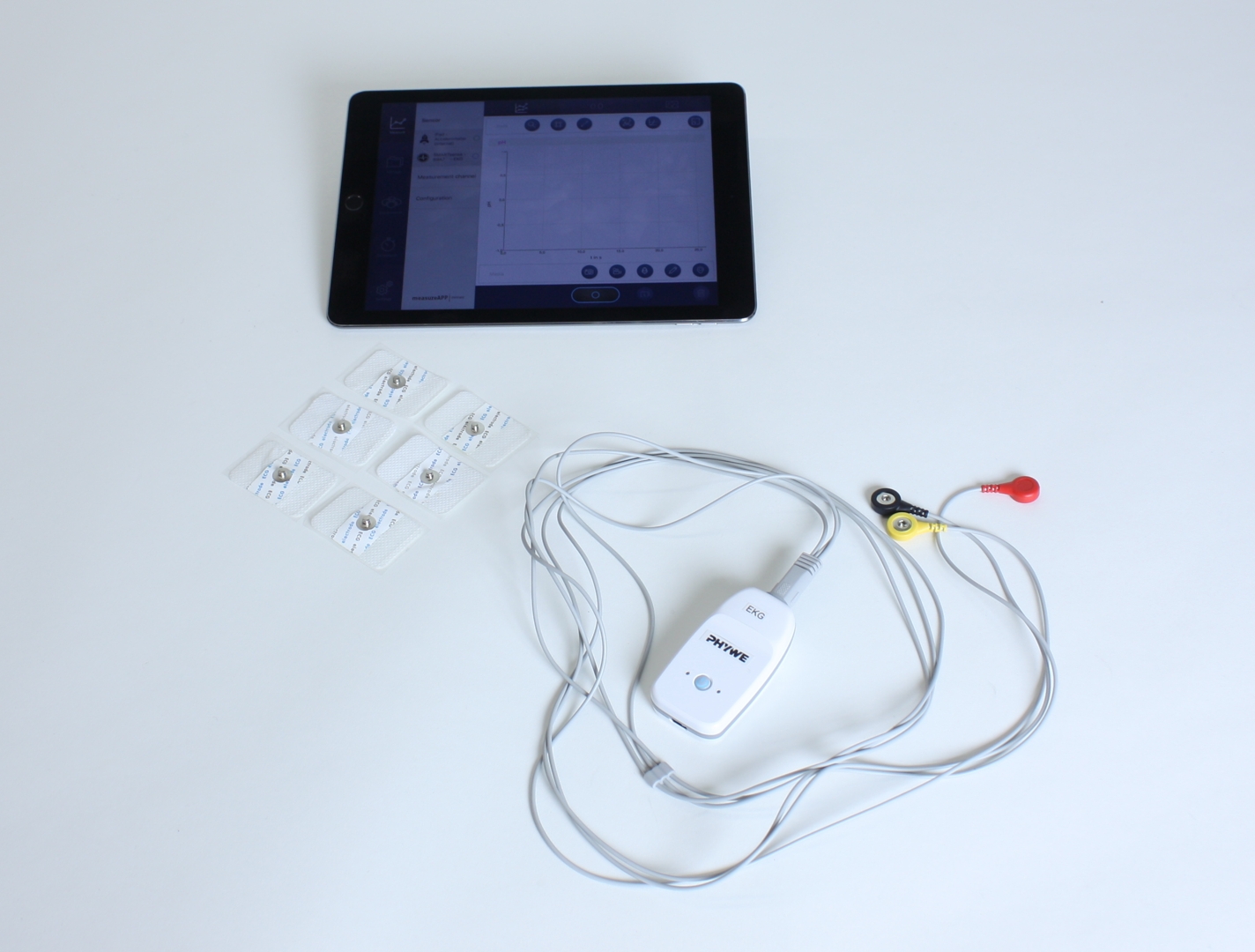Principle
With the help of an electrocardiogram (ECG) the sum of the electrical activities of all myocardial fibres can be registered. The heart activity increases with the load on the body to maintain the stability of the cardiovascular system. The contraction of the heart cannot be deliberately controlled by man. This experiment investigates how physical stress affects heart activity.
Benefits
- Especially understandable and didactically prepared description of the experiment (relevance to everyday life, etc.) including protocol questions.
- Future-oriented teaching: Integration into digital science lessons with tablets or smartphones.
- Increased motivation of students by using the intuitive measureAPP.
- Increased media competence.
Tasks
- generate an ECG in the transition from a state of rest to a state of physical exertion (20 knee bends)
- generate an ECG under load in transition to a resting state and calculate the time in which the resting pulse is reached again
Learning Objectives
- Electrocardiogram (ECG)
- strain ECG
- heart activity
- heart muscle

